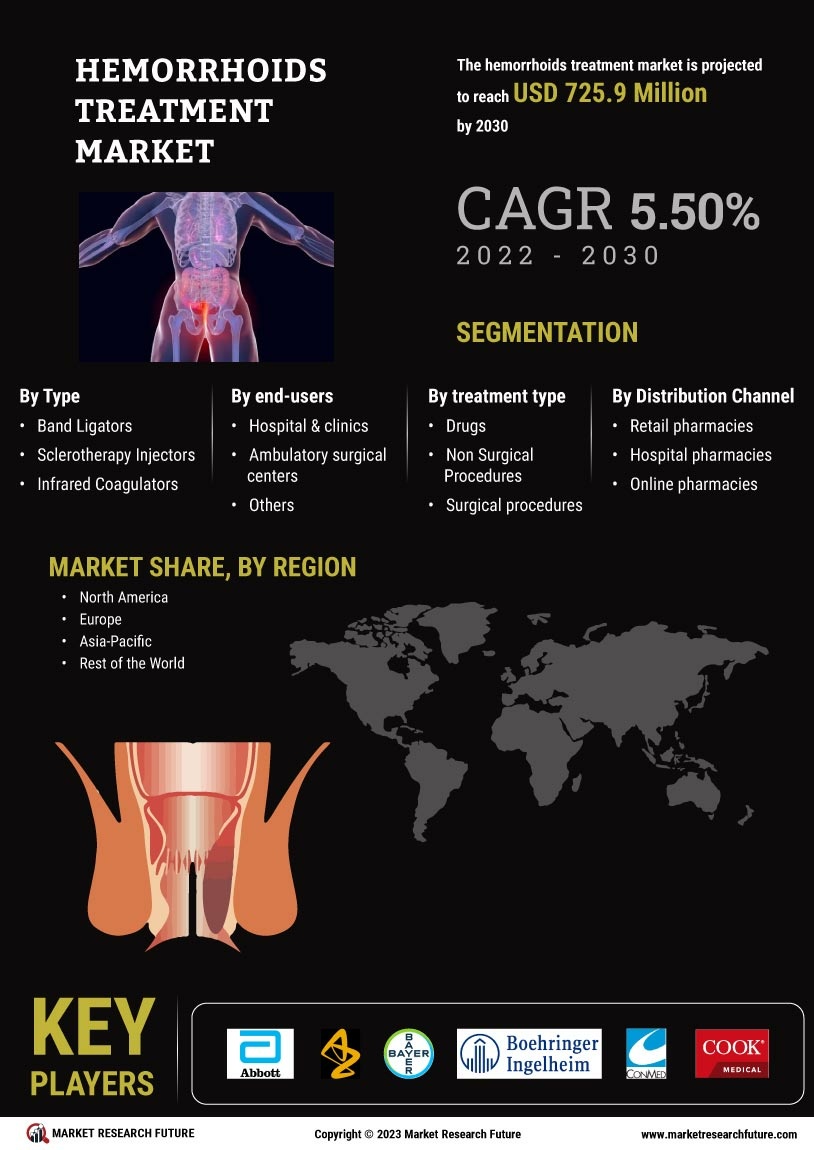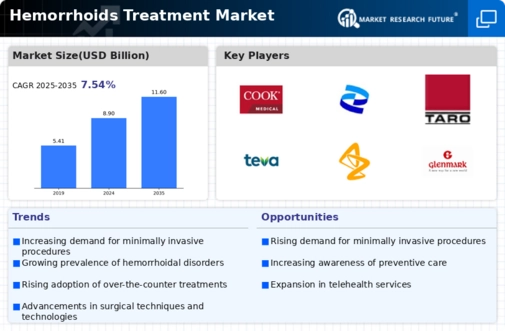Market Growth Projections
The Global Hemorrhoids Treatment Market Industry is poised for substantial growth, with projections indicating a market value of 8.9 USD Billion in 2024 and an anticipated increase to 11.6 USD Billion by 2035. This growth trajectory reflects a compound annual growth rate of 2.41% from 2025 to 2035, driven by various factors including rising prevalence, advancements in treatment options, and increased awareness. The market's expansion is indicative of a broader recognition of the importance of effective hemorrhoid management, which is likely to lead to further innovations and improvements in patient care.
Growing Geriatric Population
The aging population worldwide is a critical factor influencing the Global Hemorrhoids Treatment Market Industry. Older adults are more susceptible to developing hemorrhoids due to factors such as decreased mobility and changes in dietary habits. As the global demographic shifts towards an older population, the demand for effective treatment options is expected to rise. This demographic trend is particularly pronounced in developed countries, where healthcare systems are adapting to meet the needs of older patients. Consequently, the market is projected to grow significantly, with a valuation of 11.6 USD Billion anticipated by 2035.
Rising Prevalence of Hemorrhoids
The Global Hemorrhoids Treatment Market Industry experiences growth driven by the increasing prevalence of hemorrhoids among the population. Factors such as sedentary lifestyles, poor dietary habits, and an aging population contribute to this rise. It is estimated that approximately 50% of adults will experience hemorrhoids by the age of 50. This growing incidence necessitates effective treatment options, thereby expanding the market. In 2024, the market is valued at 8.9 USD Billion, indicating a robust demand for various treatment modalities, including over-the-counter medications, surgical interventions, and lifestyle modifications.
Advancements in Treatment Options
Innovations in medical technology and treatment methodologies are propelling the Global Hemorrhoids Treatment Market Industry forward. New minimally invasive procedures, such as rubber band ligation and infrared coagulation, offer patients effective alternatives to traditional surgical methods. These advancements not only improve patient outcomes but also enhance recovery times, making treatments more appealing. As the market evolves, the introduction of novel pharmacological agents and combination therapies is likely to further enhance treatment efficacy. This trend is expected to sustain the market's growth trajectory, with projections indicating a rise to 11.6 USD Billion by 2035.
Increased Awareness and Education
Heightened awareness regarding hemorrhoids and their treatment options is a significant driver for the Global Hemorrhoids Treatment Market Industry. Public health campaigns and educational initiatives aim to destigmatize the condition, encouraging individuals to seek medical advice. This shift in perception is crucial, as many patients delay treatment due to embarrassment. As awareness grows, more individuals are likely to pursue effective treatment, thereby expanding the market. The increasing availability of information through digital platforms further supports this trend, potentially leading to a compound annual growth rate of 2.41% from 2025 to 2035.
Regulatory Support and Reimbursement Policies
Supportive regulatory frameworks and favorable reimbursement policies are essential drivers for the Global Hemorrhoids Treatment Market Industry. Governments and health organizations are increasingly recognizing the importance of treating hemorrhoids, leading to improved access to care. Reimbursement for various treatment modalities encourages healthcare providers to offer a wider range of options to patients. This support not only enhances patient access to necessary treatments but also fosters innovation within the industry. As a result, the market is likely to witness sustained growth, with a projected compound annual growth rate of 2.41% from 2025 to 2035.







